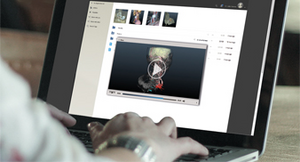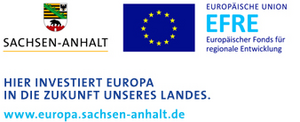Automated online service for the production of patient-specific 3D models to support therapy decisions


The wisdom of life "You can't see into a person" has not been true since Wilhelm Conrad Röntgen. Layer images from imaging methods such as CT or MRI provide doctors with insights into the anatomy of their patients. However, they are only able to convey a spatial idea of organs and their position in relation to each other to a limited extent. However, this is essential in many areas of operation and therapy planning and also in the associated exchange with the patient.
Clear three-dimensional models (3D models), which are obtained from the patient's medical image data, could be an important decision-making aid both for the physician and the patient. This applies both to the virtual 3D models, whose outer and inner forms (morphologies) can easily be viewed interactively from all sides on the computer, and to the plastic 3D models produced from them (e.g. via 3D printing).
However, their production requires many manual steps, which are carried out by internal experts or service providers in close consultation with the physician. Due to the high expenditure of time involved in this workflow, it is difficult to integrate it into everyday clinical practice.
Together with the Computer-Assisted Surgery Group of Jun.-Prof. Dr. Christian Hansen of the Otto-von-Guericke-University Magdeburg we are facing the challenge to enable the use of patient-specific 3D models in clinical routine. The project runs from 01.11.2016 to 31.10.2019 and is funded by the European Union and the State of Saxony-Anhalt.
Our vision is to provide medical professionals with a platform that allows model generation and manufacturing to be easily shared internally or externally and that simplifies communication. To this end, physicians should not only be able to securely upload their patients' image data, but also to annotate it for the experts who can process, annotate and in some cases even segment the data themselves, at any time and from various local or mobile devices. The research project will research and develop intelligent interaction techniques, (partial) automation of image analysis and segmentation techniques, corresponding interfaces and other innovative online services.
Our development focus is on prostate cancer. With a large number of factors that have an influence on the chances of cure and therapy options, it is a characteristic case of application and is therefore very well suited as an example and for later extension to other clinical pictures.
Background information on the clinical picture and motivation
Prostate cancer is the most common cancer among men and the third most common cancer-related cause of death in Germany after lung and colon cancer. Many tumours are discovered by chance or grow so slowly that they never cause discomfort. However, preventive examinations also mean that the majority of tumours are diagnosed at an early stage. Then there are good chances of recovery. However, if the tumour has spread to other organs, the patient can usually only be treated palliatively.
In addition to the stadium, the morphology of the tumour also has a major influence on the therapy and chances of survival. The spectrum of therapy options ranges from active monitoring to chemotherapy, radiotherapy or surgical removal, which can result in severe side effects and damage to surrounding organs. In order to avoid unnecessary damage, a very precise diagnosis and therapy planning is crucial. The successes that have been achieved in medical imaging confirm our intention to make the generated 2D layer images more comprehensible, easier to evaluate and usable for more areas of application with the aid of 3D representations and 3D models.
Project partners and research funding
The project "Automated online service for the production of patient-specific 3D models to support therapy decisions" was funded by the federal state of Saxony-Anhalt and the European Union.
Our project partners include:
www.europa.sachsen-anhalt.de
www.inf.ovgu.de

